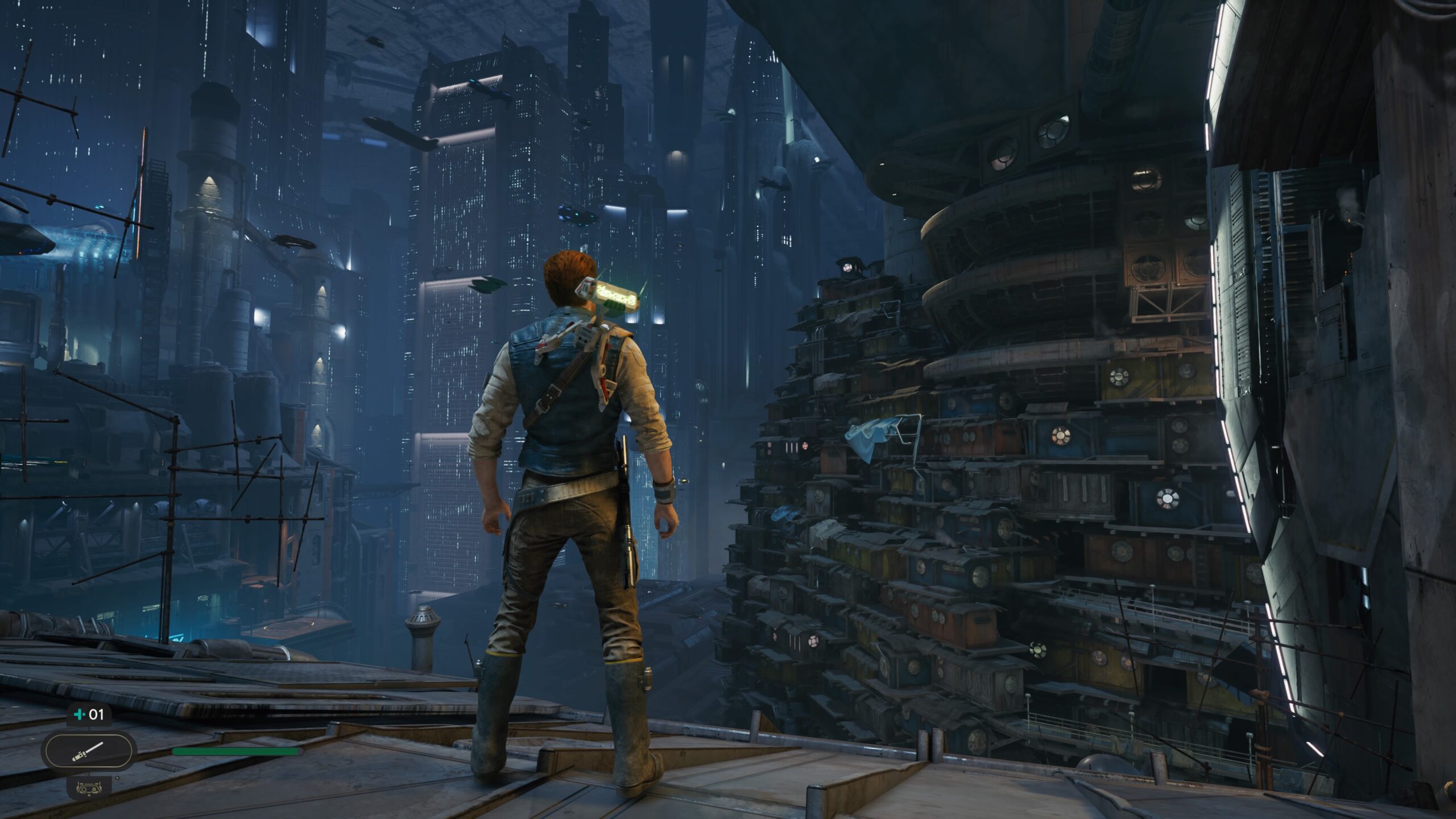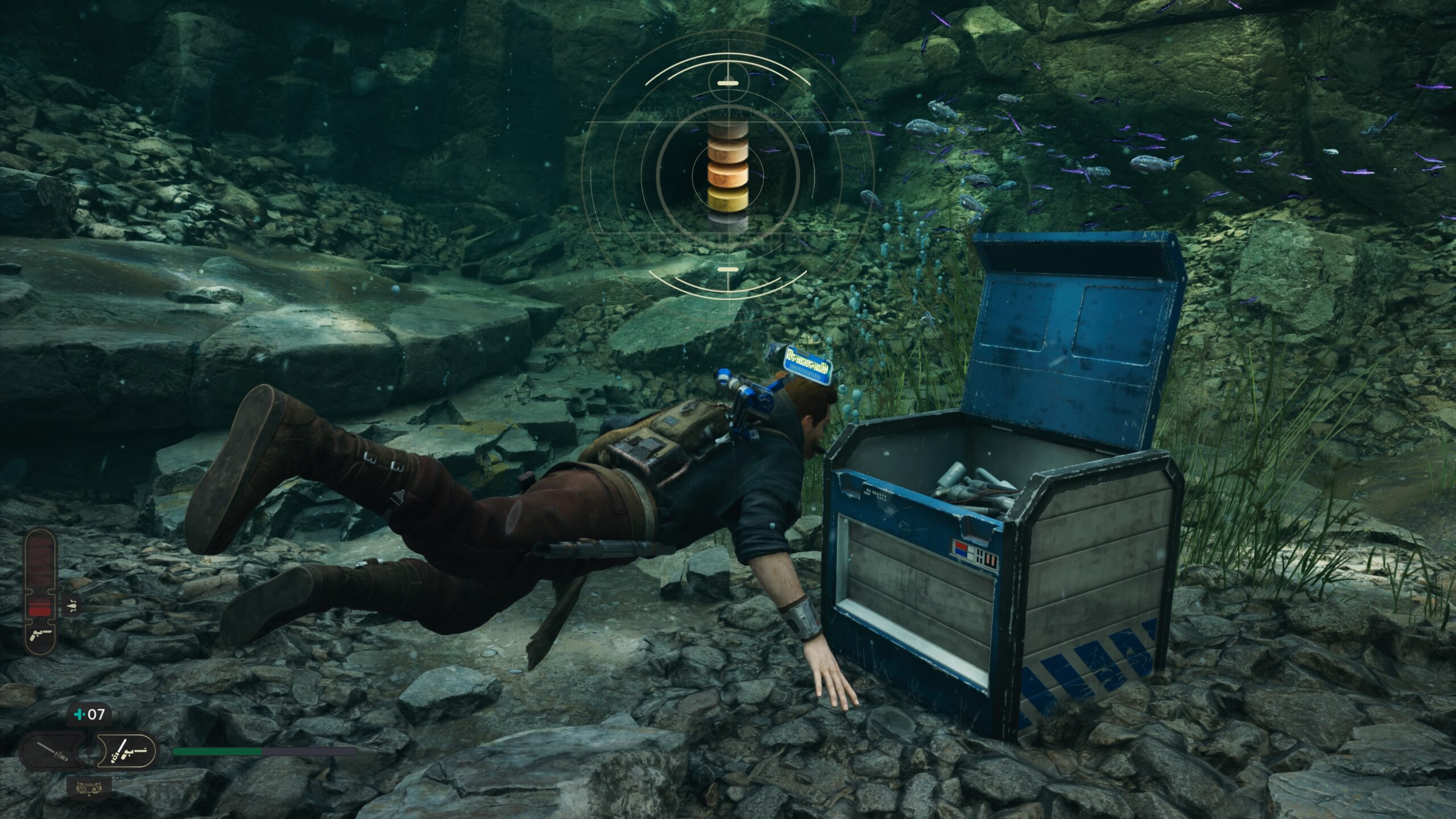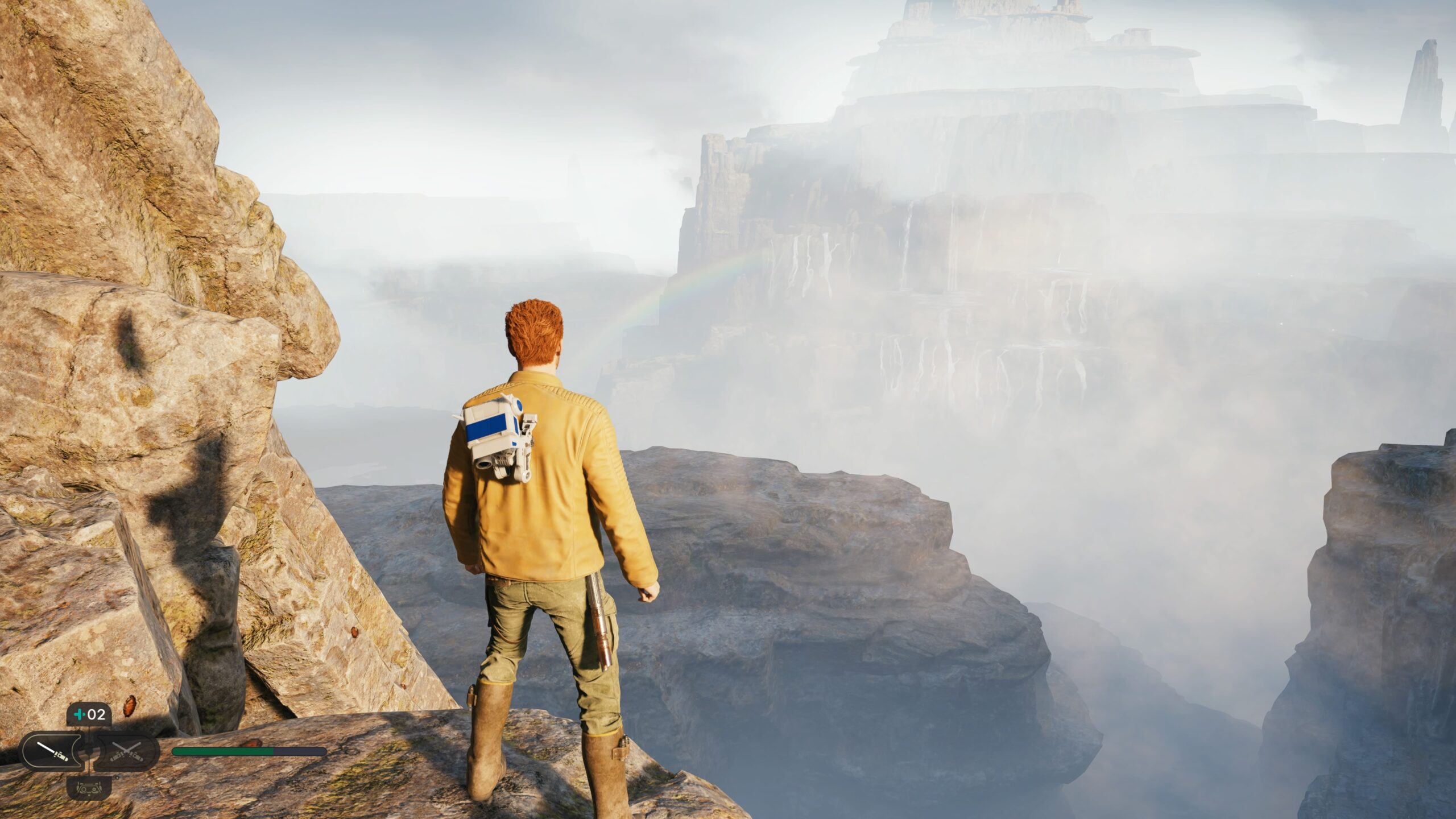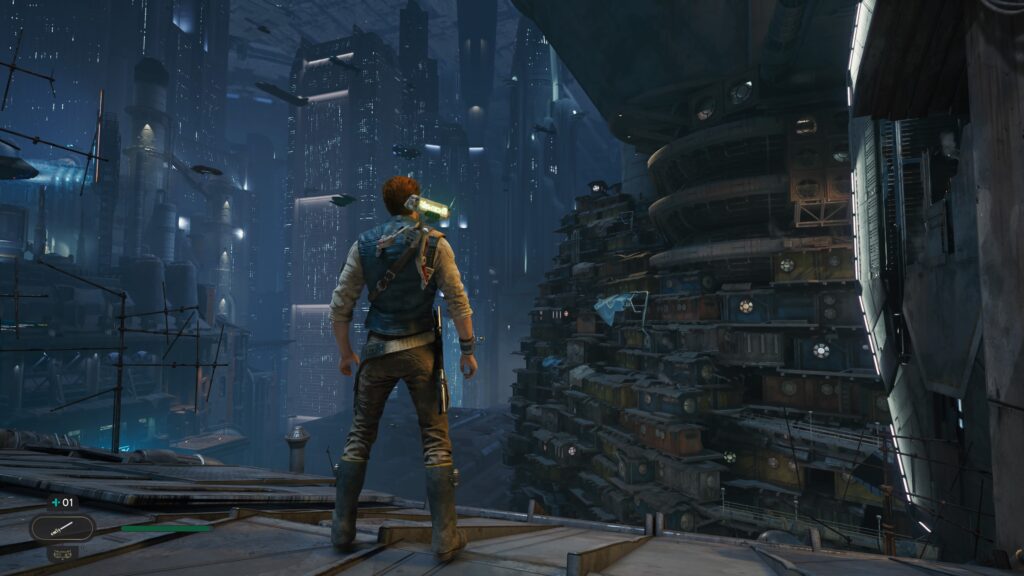REVIEW: Star Wars Jedi: Survivor (2023)
Made Me Love Star Wars Again

Respawn’s Star Wars Jedi: Fallen Order was the single-player experience Star Wars fans have been wanting for a decade, one that broke the dry run of Star Wars games under EA. Fast-forward to 2023, and the sequel launches with numerous bugs and optimization woes, prompting review-bombing and sour impressions, especially among the PC audience. Amid such a rough launch, it’s somewhat difficult to discern where this newest entry in a rich lineage of Star Wars games stacks up in terms of quality. At its core, Jedi: Survivor is excellent; it takes every facet of gameplay from the first game and expands and improves it across the board. Combat is more varied, including half a dozen lightsaber stances with their own unique ability trees and more Force abilities than you can shake a lightsaber at. The environments are larger, almost open-world on a certain planet, yet still retaining that dense level design from Fallen Order. The story and characters take a few controversial turns, yet are interesting and well-written against the backdrop of a richly detailed Star Wars galaxy teeming with lore and fan service. Star Wars Jedi: Survivor is not without its faults, but after completing it to nearly 100%, I have a hard time calling it a disappointing sequel. Launch woes included, I’d place Jedi: Survivor at about the same level of quality as its prequel, Fallen Order, which had plenty of bugs and launch issues of its own. My review will be taking into consideration the tech problems I encountered on PS5 only, though I do acknowledge the numerous issues with the PC version of the game. Now, without further ado, let’s discuss what makes Jedi: Survivor really sing and earn its place within the rich history of Star Wars video games.
Capturing Classic Star Wars Tone

The two most defining characteristics of Respawn’s Star Wars Jedi duology are setting and gameplay framework, both of which succeed brilliantly in Jedi: Survivor. Let’s start with the setting. If I had any doubts Respawn would fail to capture that Star Wars flavor with the sequel, they were swiftly put to rest upon booting up the game and hearing the majestic tones of a flute sliding across several octaves over the title screen. The music and sound effects of the opening screens managed to put a smile on my face every time I booted up the game; the sound is so authentically Star Wars without outright plagiarizing familiar Star Wars themes. The musical score throughout the game can be described as unmistakably Star Wars without using the existing themes; it’s mostly atmospheric and does a good job of establishing a galaxy far, far away with its mystical soundscape. You’ll occasionally hear fragments of the Imperial March or a limpid Force Theme wanting to emerge, only to gently fade away before finishing its familiar melody.
Respawn has managed to appeal to both the anti-Disney and pro-Disney Star Wars fandom. Since Jedi: Survivor takes place during the dark times between Revenge of the Sith and The Original Trilogy, there’s lots of overlap between the two eras, yet there’s also some stuff from the newly formed High Republic lore. Interestingly, Jedi: Survivor incorporates more prequel trilogy stuff than Fallen Order did. You start the game in handcuffs on Coruscant and find yourself immediately surrounded by Clone Wars-era vehicles and enemies and, of course, the ubiquitous presence of the newly formed Empire. There are plenty of battle droids, droidekas, and prequel-era ships that are sure to delight fans. Jedi: Survivor feels like authentic Star Wars, which is something I can’t say about the Disney trilogy. I particularly like how you’re given more of a look into the past than with Fallen Order’s more immediate Imperial focus. If you’re a big Clone Wars fan, play this game; there’s not a ton of new content of the era in recent media, and it’s portrayed in really cool ways throughout Jedi: Survivor. That being said, Original Trilogy fans have plenty to love here as well. The environments are littered with familiar gadgets and gizmos first seen in The Empire Strikes Back or Return of the Jedi, from gonk and mouse droids to the fearsome Rancor. There’s a lot to love for Star Wars fans of any era. I could instantly tell when something was from the Clone Wars, the Empire, or the High Republic, not only because of the obvious color distinctions but because all of the knick-knacks and architecture have a level of detail resembling the source material.
Tech Woes
Artistic intent is only as good as the tech it’s running on, and Jedi: Survivor fails to display the now-standard 4K native resolution at 60FPS, instead locking 60FPS to an outdated 1440p resolution that lacks many of the Unreal 4 perks. Performance mode is probably going to suit this action-oriented game better than the 30 FPS quality mode since it’s a fast-paced action game requiring swift timing. Neither of the graphics settings was a deal-breaker for me, but both have their downsides that may be deal-breakers for some. Unreal 4’s post-processing is used to pretty good effect, with the quality mode featuring impressive shadows, reflections, volumetric lighting, and really good particle processing, though there are plenty of visual bugs and shortcomings along with it.
I didn’t get many substantive glitches during my time, but I counted three times the game froze on a loading screen, prompting a reset of my gameplay session.

Other than game freezes, poor resolution/framerate, and the occasional funny but harmless glitch like these T-poses above, my experience was somewhat smooth and unhampered, technically speaking, but certainly flawed.
Story and Characters
The story of the hunted Jedi Knight, Cal Kestis, continues in Jedi Survivor. Like the first game, the story is mainly based around a plot-dangling MacGuffin that the Jedi must obtain before the enemy does. There are some unpredictable twists in the second half of the game, but it’s pretty much structured the same way as Fallen Order. The theme of survival is heavily emphasized throughout, as you could have guessed, and the moral quandary of survival over duty eats away at Cal’s conscious in clever ways. I’m impressed the devs managed to squeeze so much thematic material out of such a straightforward premise. Though the stars of the show are perhaps the environments and stories they tell. Cal’s companion droid, BD-1, is the game’s data scanner, supplying hundreds of small descriptions of various denizens, machinery, and plant life you encounter. If you enjoy collecting stuff, you’re in luck because there’s a lot to collect, all made better with the accompanying lore.

Character interactions are an absolute treat in Jedi: Survivor. Stormtrooper banter never gets old, and this time, the cute yet clumsy battle droids join the club. Humor is consistent throughout the game, though there’s an added sense of weariness the main cast exhibit as they struggle to escape the clutches of the Empire and keep those they care about from danger. Cal, in particular, seems beaten down and haggard from all the friends and family he’s lost to the Empire, not helped by the added death toll by this game’s end. Even the main source of comic relief from Fallen Order, the pilot Greez, is tired of fighting and just wants to settle down and retire somewhere the Empire can’t interfere. The original crew has their charming moments in this sequel, often set within the context of conversations you can activate between story points. In fact, there’s a cantina’s worth of characters with updated dialogue every time you return to them after some time. These character interactions remind me of the party conversation aboard the Normandy in Mass Effect, and I was surprised by the large amount of dialogue. There are more meaningful character interactions in Jedi: Survivor than in its predecessor, and I thoroughly enjoy a lot of it. Scenes like Cal reuniting with best bud Greez make a returning player like me smile from ear to ear, thanks to the excellent dialogue and voice acting. Merrin takes on a more significant role than she did in Fallen Order, though I find her personality to be on the smug side, and yes, she’s a Nightsister, but it doesn’t save how annoying she can be at times. On the other hand, Bode is a new character who is very likable. He’s the everyman kind of rogue who just wants to settle down in safety with his daughter. I particularly enjoy just how down-to-earth and chill he is. Scene direction and storyboarding have significantly improved from Fallen Order, ad that is showcased early in the opening prologue mission. Seriously, there’s a scene in the prologue that easily matches the Original Trilogy in its excellent camera work, pacing, movement, acting, etc. But large-scale scenes like that are not all over the place in this game, which is mostly about the journey of exploring and battling your way through a galaxy ravaged by war.
Gameplay Loop/Genre Definitions

Jedi: Survivor retains and iterates the action/adventure Metroidvania style of gameplay that many loved from the first game. The environments are wide yet focused areas, emphasizing platforming and puzzles with a penchant for shortcuts and secrets. The Metroidvania aspect is hard to ignore when even 40 hours into the game, new abilities are still being unlocked, which open the way to previously blocked paths. Jedi: Survivor is more open than the prequel, and this is demonstrated best with the huge outer rim world of Koboh, where you’ll be spending the majority of your time. Koboh is massive, with many different zones, each its their own unique topography and theme. Thankfully, traversal across such distances is mitigated by the use of mounts and meditation warp zones. Though I must admit, the mounts and Cal’s own running aren’t exactly the swiftest means of traversal in a game as large as this, but they more or less take you across the dense landscapes quickly enough. It’s been said hundreds of times about the Dark Souls games just how wonderfully the stages loop in on themselves with shortcuts and constantly evolving routing, so I’ll just mimic that regarding the level design of Jedi: Survivor. The level design is really good across the board and is perhaps my favorite aspect of the game when combined with the Star Wars setting. Like the more linear levels, such as forest arrays and secret hideouts that pervade Jedi: Survivor, the wider environs host wonderful routing and density. Don’t think of your traditional Ubisoft open world; this is still a small map compared to the likes of Assassin’s Creed Valhalla or something. The map density is spread, so there are enemies and points of interest at every turn with hardly any empty space. But this is Star Wars, and that means plenty of planet-hopping and sightseeing beyond just one planet. I won’t spoil the number of planets you visit in Jedi: Survivor, but it’s a decent amount with just the right amount of variety and relevance. I admit, I like Fallen Order’s planet list a bit more, but Koboh is just so large that there has to be downsizing somewhere in the new game.
Combat/Abilities

The core combat of Jedi: Survivor remains true to its predecessor, though there are some notable additions like stances and BD-1 abilities. The Dark Souls-lite swordplay returns almost unchanged from Fallen Order. I found the parrying timing to be practically identical to the first game, as well as the animation timing and blocking. The major difference from a more dedicated combat system, like those found in Sekiro or Nioh, is the weighty animations that accompany each button press. These animations take time to lock in and cannot be manually canceled or changed. It’s usually not so bad as to be considered stop-and-block slow fencing, but it is noticeable how each swing requires a windup before it connects its hit with the target. If you get the timings correct on back step swings, block timings, and all the different types of abilities at your disposal, you’ll line up combos and smoothly cut down enemies like they’re butter, but it takes getting used to and is not a style for everyone. The new addition of stances is an awesome twist to the formula I adore. Duel Wielding, Double-bladed, and even blaster stances get their own ability trees this time around, plus two more stances I won’t mention here. I initially stuck with the default stances but quickly fell in love with some of the others (blasters are a game changer). Between all the different stances and their abilities, force abilities, and BD-1’s new repertoire of tricks, Jedi: Survivor supplies the player with a lot more choices for how to dismantle battle droids and Stormtroopers than Fallen Order. Except for the weighty animations involved with every action, jumping up crags, slicing through clones, and solving puzzles using the Force were always enjoyable and felt natural to do for me. The pacing of save points and shortcuts is consistently good across the game, and I rarely got lost due to poor indications or pathing issues. My biggest gripe regarding traversal is a pervasive problem with invisible out-of-bounds terrain, which instantly respawns you upon entering, like this small innocuous hole that instantly kills Cal upon entering (also, notice the boots clipping into the log…).

This out-of-bounds problem exists in multiple areas that aren’t indicated at all and are easily mistaken as a traversable point of interest. And again, shoddy textures hamper things like visibility and draw distance when in performance mode, while sluggish 30 FPS combat makes you suffer gameplay-wise for switching to quality mode. Gameplay has its ups and downs, but the core is a success.
Secrets/Post-game/Replayability

All this diversity in gameplay and level design goes a long way toward making Jedi: Survivor highly replayable, but it goes beyond just that. There’s a subtle post-game quest chain of gathering databank entries from the main antagonist, essentially seeing things from their point of view after the dust has settled and you thought you saw the full narrative. The crew also remarks on the end-game events, almost giving the player the impression that the game world is ever-moving and adapting even after the credits roll. Minor side characters have new things to say, and there are a ton of areas to explore with the hard-earned end-game tools. If all that wasn’t enough, there’s a substantial new game+ that carries over skill points, skill trees, lightsaber stances, map upgrades, databanks, and collectibles. New perks and lightsaber blades are rewarded to a new game+ file and are exclusive upon finishing the game to add to that. All this renders Jedi: Survivor’s replayability very flexible and attractive. I admit I’ll be glad to come back for my new game+ playthrough once the game gets several more patches and tech improvements.
Conclusion

Star Wars Jedi: Survivor is a very good Star Wars game; it’s also a very good video game in general. An obvious slight against it is the awful PC optimization at launch and the numerous bugs present in all versions of the game. When and if you get around those issues, Jedi: Survivor provides a great time. Respawn Entertainment nailed the Star Wars tone, the characters are well-acted and generally interesting, and the story and gameplay provide quality meat with plenty of replayability and challenge. I know I’ll get some flack for saying this, but I recommend the console versions of this game to just about every gamer out there, especially if you like old or new Star Wars. Even if you’re not into heavy action games, the lower difficulties provide a lot of leeway for mistakes, so you can play it more casually. There’s a lot to love here, from the Zelda-inspired level design and puzzles to the Dark Souls-style combat and Metroid progression, not to forget the vast Star Wars setting being put to good use. This is easily my favorite Star Wars media since Jedi: Fallen Order, and one of the top action-adventure titles of this console generation.
Star Wars Jedi: Survivor (2023)
Gameplay - 8.4
Difficulty/Length - 9.3
Story - 8.4
Graphics - 8
Sound Design - 9
8.6
Great
Jedi Survivor improves just about every aspect of its prequel, except PC optimization. If you've wanted an authentic Star Wars setting for a single player game, look no further.







